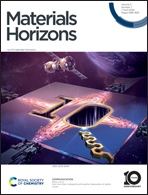Distinguishing thermoelectric and photoelectric modes enables intelligent real-time detection of indoor electrical safety hazards†
Abstract
Due to the prevalence of electronic devices, intelligent sensors have attracted much interest for the detecting and providing alarms with respect to indoor electrical safety. Nonetheless, how to effectively identify various indoor electrical safety hazards remains a challenge. In this study, we fabricated single-walled carbon nanotube/poly(3-hexylthiophene-2,5-diyl) (SWCNT/P3HT) composites with exceptional bifunctional thermoelectric and photoelectric responses. Through synergy of the thermo-/photoelectric effects, the composites yielded greatly enhanced output voltages compared with the use of thermoelectric effects alone. Interestingly, modes of heat transfer can be effectively distinguished using the nominal Seebeck coefficients. Based on the remarkable output voltages and deviations in the nominal Seebeck coefficients, we developed indoor intelligent sensors capable of effectively identifying and monitoring diverse indoor electrical conditions, including electrical overheating, fire, and air conditioning flow. This pioneering investigation proposes a novel avenue for designing intelligent sensors that can recognize heat transfer modes and hence effectively monitor indoor electrical safety hazards.

- This article is part of the themed collection: Celebrating the scientific accomplishments of RSC Fellows


 Please wait while we load your content...
Please wait while we load your content...